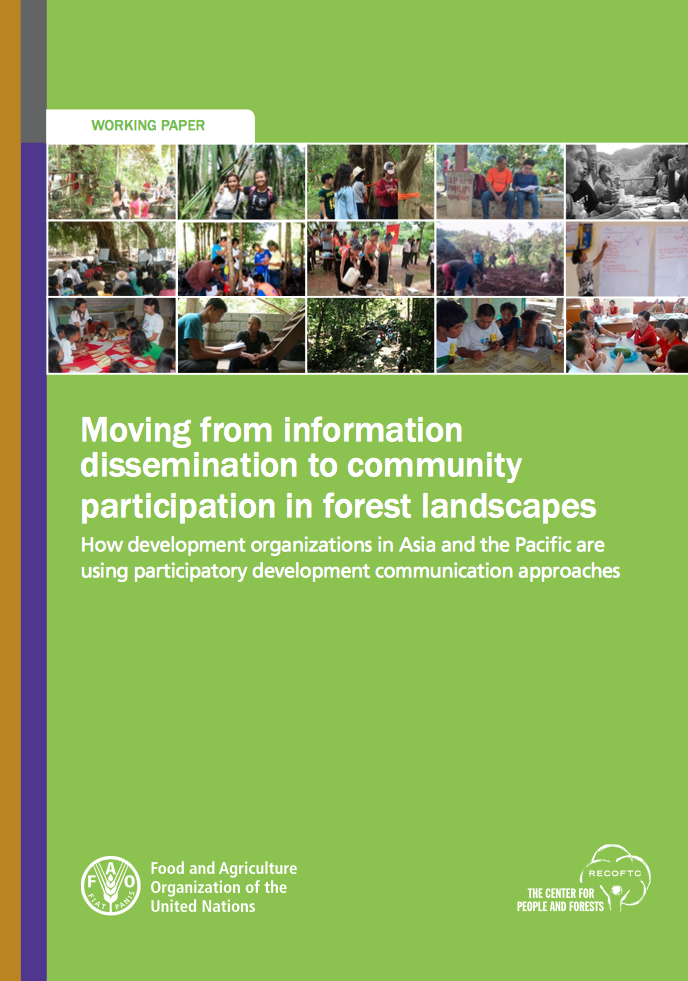Silvicultura comunitaria
AGROVOC URI:
Forest planning and traditional knowledge in collective woodlands of Spain: The dehesa system
Property rights, institutions and choice of fuelwood source in rural Ethiopia
This study examines the relationship between property rights, defined by land tenure security and the strength of local-level institutions, and household's preferences for fuelwood source. A multinomial regression model applied to survey data collected in rural Ethiopia underpins the analysis. Results from the discrete choice model indicate that active local-level institutions increase household dependency on open access forests, while land security reduces open access forest dependence.
When collective action and tenure allocations collide: Outcomes from community forests in Quintana Roo, Mexico and Petén, Guatemala
Based on a comparative case study of four community forestry enterprises in Guatemala and Mexico, we examine the relationship between user group characteristics and state allocation of tenure bundles. Using Schlager and Ostrom's four levels of tenure bundles and collective action theory, we illustrate how tenure bundles and collective action costs interact to either promote or create disincentives for conservation and communal economic benefits.
Nature conservation in Cross River National Park, south-east Nigeria: promoting collaboration between local people and conservation authorities
In most developing countries, there has been a long-standing conflict between nature conservation and local demands for natural resources. This paper reports a study on the preference of local people for different incentives that could help increase local support for nature conservation. It also explores the possibilities for designing a sustainable incentive strategy. Data were obtained from personal interviews conducted with community members around the Okwangwo Division of the Cross River National Park in south-east Nigeria, and were analysed using a multinomial logit model.
Measuring impacts of community forestry program through repeat photography and satellite remote sensing in the Dolakha district of Nepal
During the 1990's community-based forest management gained momentum in Nepal. This study systematically evaluates the impacts that this had on land cover change and other associated aspects during the period 1990–2010 using repeat photography and satellite imagery in combination with interviews with community members.
Climate Change Concern to Cattle Feed in Bangladesh
This research focuses the climate change concerns for livestock feeding management in Bangladesh as it causes strange behavior and variation of cattle diets and feed shortages in the last two decades. It is obvious from the recent literature that Bangladesh is one of the most climate change vulnerable country of the world to climate change. It causes cattle feed shortages, modification in major production of yields, alteration in a variety composition of rangeland and edifying variety of cattle feed setback.
novel application of satellite radar data: measuring carbon sequestration and detecting degradation in a community forestry project in Mozambique
Background: It is essential that systems for measuring changes in carbon stocks for Reducing Emissions from Deforestation and Forest Degradation (REDD) projects are accurate, reliable and low cost.
Socio-economic issues in forest management in India
India's forest policy regime enacted so far had alienated the common users of their property rights in the name of forest and wildlife conservation. However, poor conservation outcomes have forced planners to reconsider the role of the forest community in resource use and conservation. Presence of a deep-rooted economic, social, cultural and ethical difference between members of Forest Protection Committee (FPC) constrains group behaviour and their capacity to modify regulations governing resource use.
What Future For Reform?
Who owns the world’s forests, and who decides on their governance? The answers to these questions are still deeply contested. To many Indigenous Peoples and local communities who have lived in and around forests for generations, the forests belong to them, under locally defined systems of customary tenure. In most countries, however, governments have claimed ownership of much of the forest estate through historical processes of expropriation, and those claims have been formalized in statutory laws.
Moving from information dissemination to community participation in forest landscapes
Traditionally, in the context of environment and natural resources management, many communication efforts have focused on the dissemination of technical information to end-users who were expected to adopt them. Development practitioners were trying to ‘push’ their products on communities in order to receive community commitment to their development initiatives.



